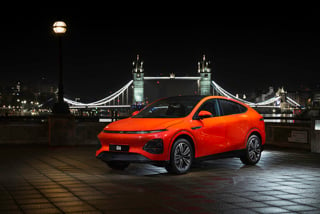Oversupply of electric vehicles (EVs) in China has the potential to impact European new and used markets, new analysis suggests.
Price cuts of more than 30% have been introduced by Chinese manufacturers for EVs in their home market.
Indicata, part of the Autorola Group, says that, with average EV discounts reaching a record 17%, the ripple effects could impact new and used car values across Europe and the UK.
The Chinese automotive market, while projected to exceed 33 million vehicles in 2025, is experiencing what industry observers are calling a ‘bloodbath’ as more than 100 different EV brands compete in an unsustainable market structure.
Leading Chinese manufacturer BYD recently announced dramatic price cuts across 25 models due to excess inventory, triggering an industry-wide response that has compressed vehicle margins.
“Chinese OEMs are facing massive oversupply and intense competition in their domestic market,” said Andy Shields, Indicata’s global business unit director.
“They need to find markets outside of China to sell their vehicles, and Europe represents their most viable and profitable export destination.”
The Indicata analysis reveals that Chinese manufacturers also face significant barriers in other major markets.
The US market, says Indicata, remains largely inaccessible due to high tariffs, while other global markets outside Europe could absorb internal combustion engine (ICE) and plug-in hybrid electric vehicles (PHEVs) but lack the charging infrastructure necessary to support battery electric vehicle (BEV) adoption.
“Whilst there are tariffs in place for BEVs in the EU, it’s still possible for Chinese manufacturers to sell BEVs in Europe more profitably than in their home market,” Shields explained.
“The UK market is particularly exposed as there are currently no additional tariffs on Chinese BEVs.”
The situation is further complicated by Chinese manufacturers' strategic reorientation, he says. Originally focused heavily on BEV production, Chinese OEMs are now increasing their focus on ICE and hybrid vehicles.
This shift responds not only to tariff considerations but also to the reality that consumer demand for BEVs has not accelerated at the rates originally expected by Governments, the EU, or the manufacturers themselves.
Indicata’s analysis projects potential increasing pressure on EU and UK markets, as well as Brazil, Mexico, and Australia, to absorb Chinese-produced vehicles as manufacturers seek new outlets for their excess production. This pressure may extend beyond BEVs to include the PHEV segment.
“We’re looking at a potential shift in market dynamics,” continued Shields. “The excess supply of new Chinese products has the potential to continue increasing pressure on used vehicles in Europe because of lowering new car list prices and excessive supply.”
The Chinese market situation highlights the unsustainable nature of the current competitive landscape, where most manufacturers require production volumes of approximately one million vehicles annually for sustainable profitability – a target most Chinese EV brands are not meeting.
Only a handful of brands, including BYD, Li Auto, and Seres, are reporting consistent vehicle margins, while others such as Nio are experiencing significant cash burn which is impacting profit margins.
Industry consolidation appears inevitable, with smaller players facing acquisition or market exit.
The Chinese government has acknowledged that the market cannot support 100 competing EV brands, setting the stage for a dramatic reshaping of the global automotive landscape.
Chinese EV manufacturers are targeting 50% of their sales from international markets, with exports already accounting for 33% of China's total EV production in the first four months of 2025.
However, this export-focused strategy carries risks due to potential geopolitical tensions, evolving tariff structures, and regulatory barriers.
For European consumers, the short-term benefits include access to lower-priced, technologically advanced vehicles. However, the potential long-term implications for used car markets could be notable, as the influx of competitively priced Chinese vehicles may create downward pressure on used vehicle valuations across multiple segments.
Meanwhile, the price war in China will further minimise the chances of established Western manufacturers selling vehicles there.
These OEMs will therefore focus more strongly on their (home) market in Europe, which is likely to lead to increased competition and price wars to avoid CO2 penalties thus impacting sales of both new and used vehicles during 2025.






















Login to comment
Comments
No comments have been made yet.